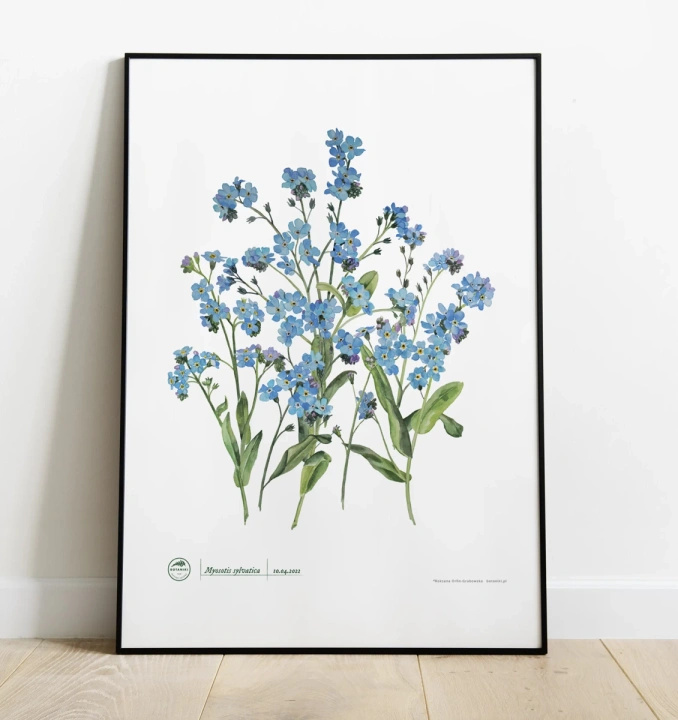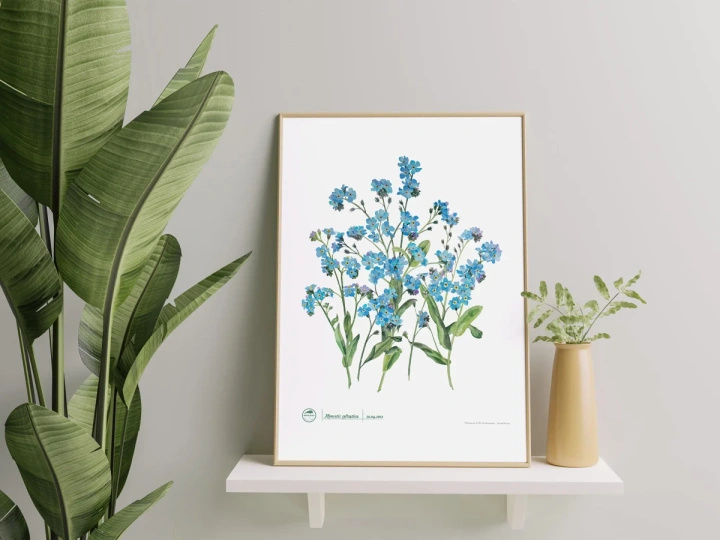Forget-me-nots — poster
- Poster measuring 32 x 45 cm printed on snow-white 250 g coated paper. When framed in an antique or classic frame with passepartout it will beautifully decorate your interior. Packed flat - no unrolling required.
Subscription products in your shopping cart
Set one delivery frequency for all subscription products in your cart every:
Subscription products in your shopping cart

The natural beauty of plants suitable for any room
The poster is a simple and effective way of providing your home with beauty and elegance. The plant themes on the botaniki posters have been created by Polish artists using watercolours to achieve beautiful and colourful graphics reminiscent of old herbariums from a time before the invention of photography. Each image has been scanned, digitally processed and printed on high quality chalkboard paper to ensure vibrant and long-lasting colours.
- Dimensions: 45 x 32 cm
- Paper weight: 250 g
- Shipped flat
- Sold without a frame
- Coated paper
Forest forget-me-nots
Myosotis sylvatica
Forest forget-me-nots belongs to the borage family. The generic name Myosotis from Greek means the resemblance of the leaves to a mouse's ear. It is widespread in Eurasia, where it is found in deciduous forests and moist thickets, along streams and bodies of water. There are more than a dozen species of forget-me-nots in Poland. Forest forget-me-nots is a biennial to perennial plant. The leaves form rosettes at the base or grow on the stem. They are alternately arranged, egg-shaped to lanceolate and finely hairy.
The flowers of forget-me-nots develop from May to July. Gathered in loose inflorescences, they are initially pinkish-purple, becoming blue later, and consist of five petals. The change in flower color during the flowering period is due to a change in the pH value of the flowers.
Forest forget-me-nots form hybrids with other species. Varieties grown in the garden have flowers in many shades of blue, as well as pink and white. The favorite position of forget-me-nots is the semi-shaded corners of the garden - so they feel perfectly at home under the openwork crowns of trees and shrubs.
The name of this plant has a similar meaning in most European languages - forget-me-nots, forget-me-nots, forgetmenot, vergeet-mij-niet, ne m'oublie pas. The plant is a symbol of remembrance, and many legends derived from folk tales are associated with it. The plant came to Europe from the Middle East during the Bronze Age. Certainly, forget-me-nots is one of the more popular, charming and well-liked plants. Once planted in the garden - it will settle in the garden for a long time.











